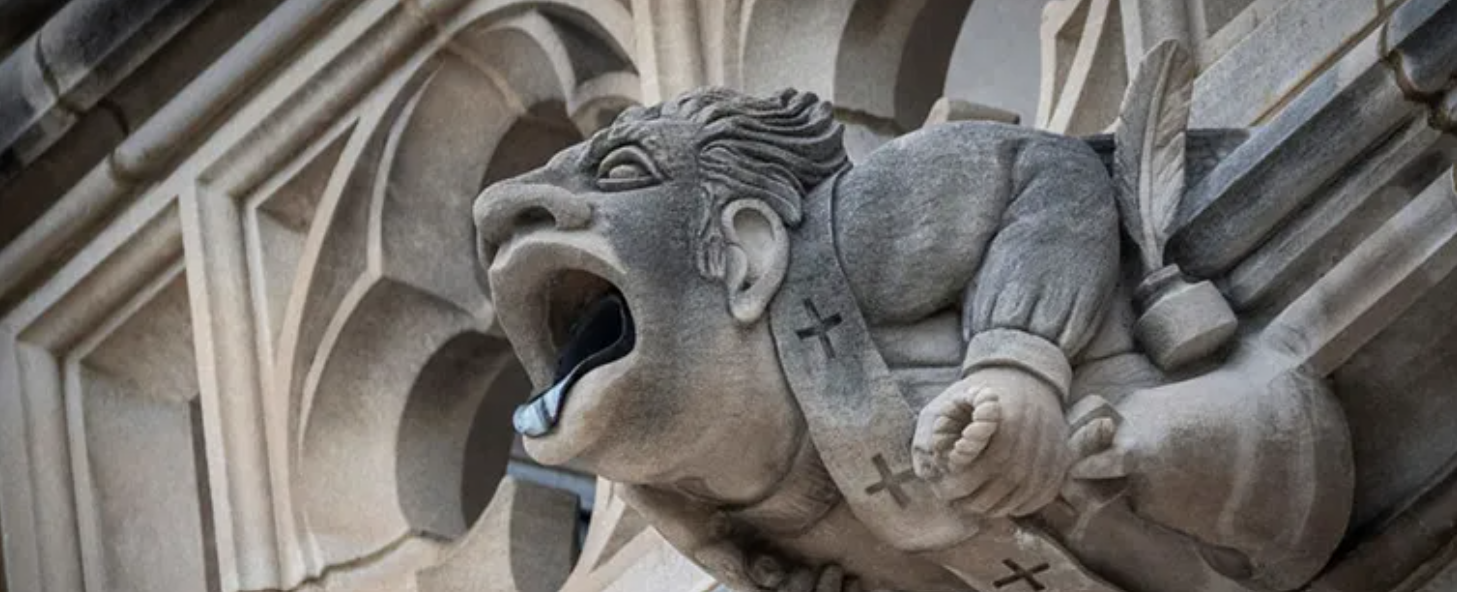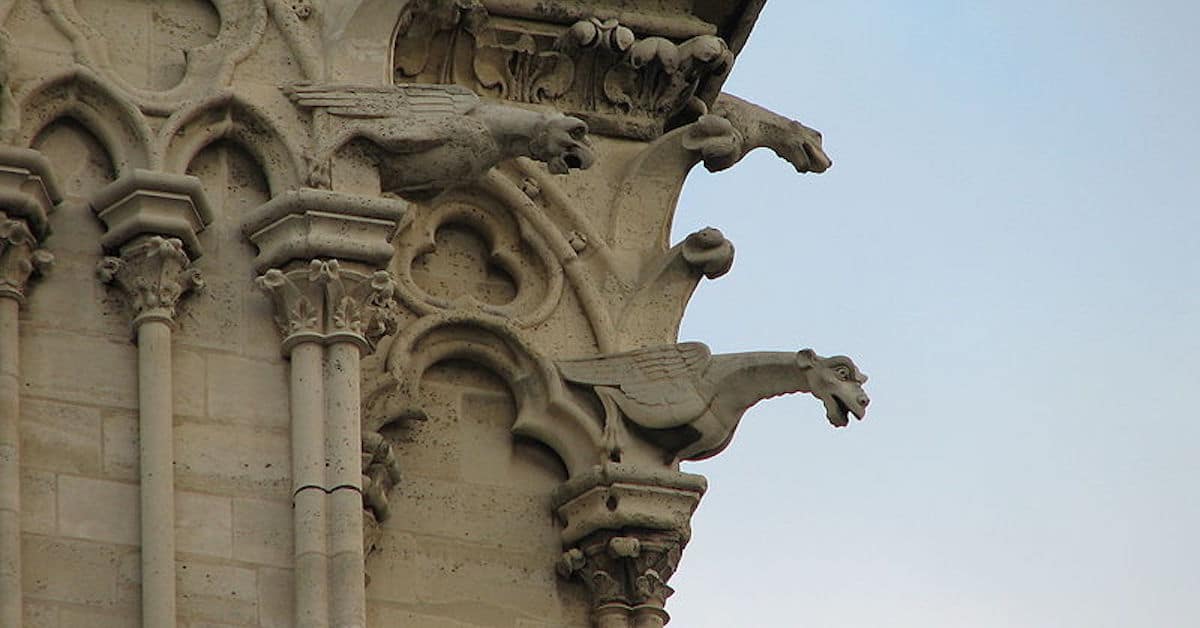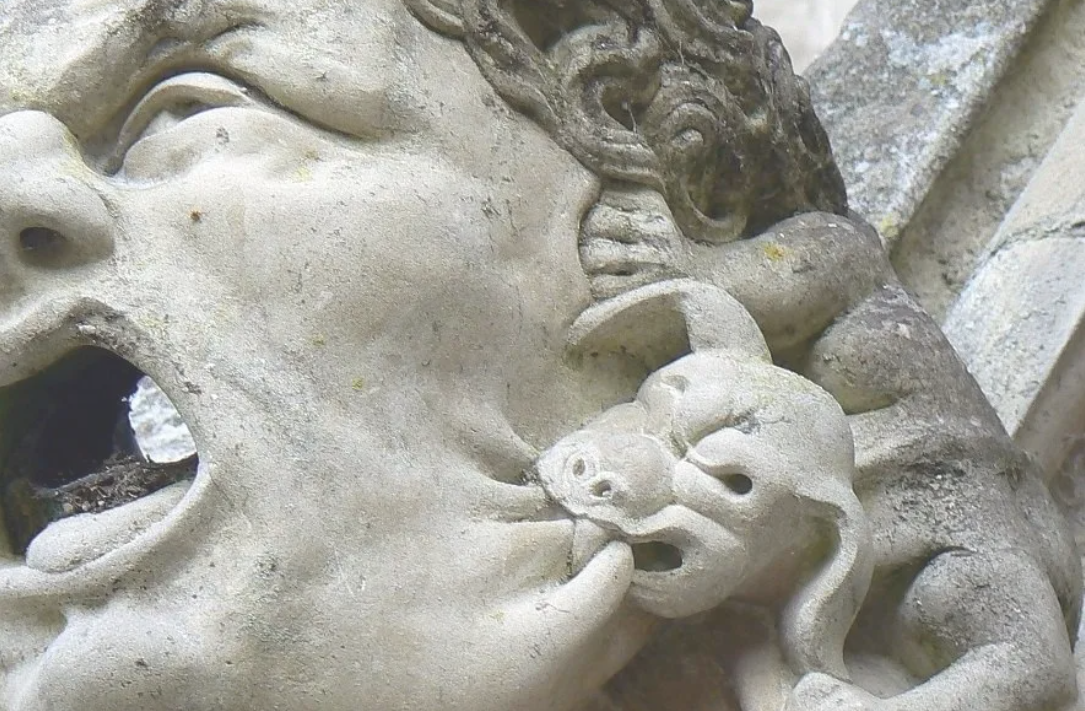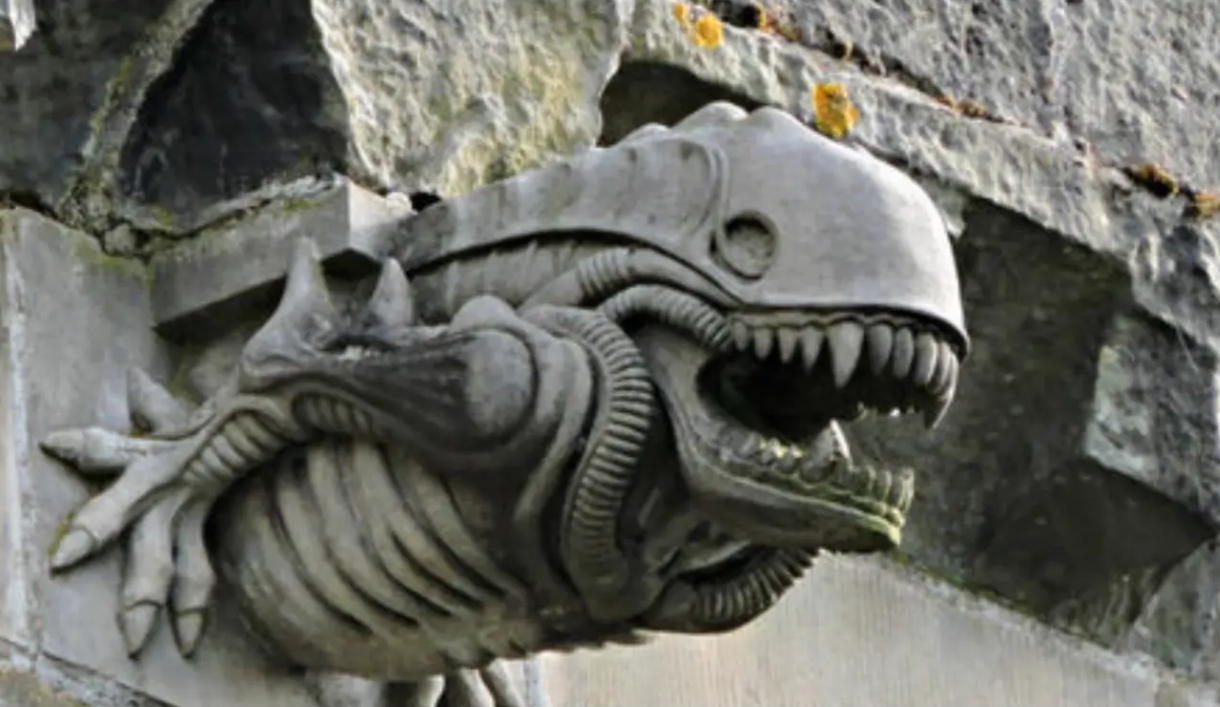History of Gargoyles
Gargoyles are among the most intriguing and eerie figures in architecture, blending artistry, functionality, and folklore. Their grotesque forms have watched over cathedrals and courtyards for centuries—part sculpture, part spout, and part mystery.

Originally designed to channel rainwater away from stonework, gargoyles quickly became a canvas for creativity, blending function with fearsome form. Credit: https://streetartutopia.com/
Origins & etymology
The origins of the term 'gargoyle' are as intriguing as the journey that followed. Exploring where it came from, how it was first used, and what it originally meant offers valuable insight.
From gutters to guardians
The word gargoyle is derived from the French gargouille, meaning "throat" or "gullet." This reflects their original purpose: to channel rainwater away from stone buildings, protecting the masonry from erosion.
Ancient roots
Even before medieval Europe, ancient civilisations like Egypt, Greece, and Rome used carved animal spouts to manage water drainage. However, these were generally utilitarian in design. The imaginative and monstrous figures we associate with gargoyles emerged in the Gothic period, beginning in the 12th century.

Gothic architecture & symbolism
The architectural style is only part of the story. To fully appreciate these structures, we also need to explore the creatures that inhabit them—both real and imagined. Their presence adds another layer of meaning to these already rich and complex buildings.
Cathedral creatures
The rise of Gothic architecture brought with it the ornate and otherworldly gargoyles perched on the ledges of great cathedrals. Notre-Dame de Paris is perhaps the most famous example, featuring dozens of carved beasts that double as rain spouts.
Symbols of protection
Though functional, gargoyles were often interpreted as protectors. Their fearsome appearances were thought to ward off evil spirits and remind viewers of the spiritual dangers beyond the church’s walls. Some believe they represented unbaptized souls or the presence of sin outside the sanctified interior.
Gargoyles vs. grotesques
A technical note: not all fantastical stone creatures are gargoyles. Those that don’t function as water spouts are properly called grotesques or chimera—a distinction often overlooked in popular usage.

Folklore and legends
Across cultures and centuries, countless stories have grown around these mysterious figures. Among them, one legend stands out for its vivid imagery and lasting impact. It’s a tale that has shaped how we see these creatures to this day.
The legend of La Gargouille
One famous French legend tells of a dragon-like monster called La Gargouille that plagued Rouen. Saint Romanus subdued it, and its unburnable head was mounted on the church—an origin myth that reinforces the gargoyle’s role as divine protector.
Beasts with a moral
Gargoyles often reflect the medieval fascination with allegory. Their hybrid forms—part animal, part demon, part man—offered moral warnings or visual storytelling for illiterate congregants, serving as a “stone sermon” from the rooftops.

Decline and revival
Renaissance rejection
As architectural tastes shifted in the Renaissance toward classical forms, gargoyles fell out of fashion. The emphasis on symmetry and restraint left little room for grotesque ornamentation.
The Gothic revival
In the 19th century, the Gothic Revival movement—led by figures like Eugène Viollet-le-Duc—resurrected the popularity of gargoyles. Many seen today on historic buildings were added during restorations rather than preserved from the Middle Ages.

Gargoyles in the modern age
From function to fantasy
Modern buildings no longer require stone waterspouts, but gargoyles endure as decorative and symbolic elements. They adorn universities, libraries, and homes, often used to evoke mystery, tradition, or creative flair.
Pop culture icons
Gargoyles have leapt from architecture into pop culture. From Disney cartoons to horror films and video games, these stony sentinels continue to inspire fear and fascination in equal measure.

Spotter's guide
Discover how gargoyles evolved from practical water spouts to symbols of protection, satire, and storytelling across centuries of architecture.

Types of Gargoyle
From mythical beasts to grinning monks, explore the wide variety of forms these stone figures take — and what they might mean.
